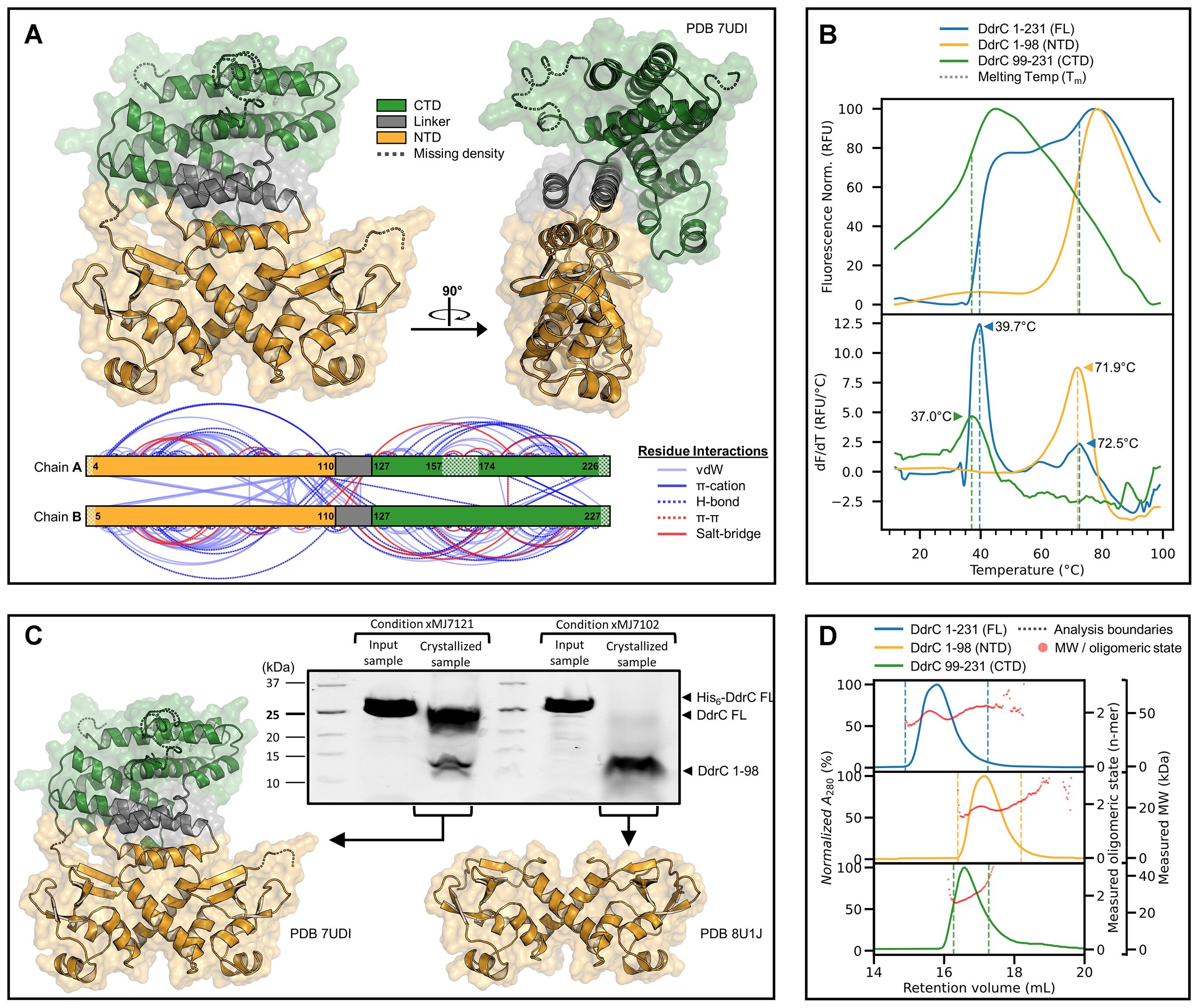Researchers from Western University have discovered a protein that has the never-before-seen ability to stop DNA damage in its tracks. The finding could provide the foundation for developing everything from vaccines against cancer, to crops that can withstand the increasingly harsh growing conditions brought on by climate change.
The researchers found the protein—called DdrC (for DNA Damage Repair Protein C)—in a fairly common bacterium called Deinococcus radiodurans (D. radiodurans), which has the decidedly uncommon ability to survive conditions that damage DNA—for example, 5,000 to 10,000 times the radiation that would kill a regular human cell. Lead researcher Robert Szabla says Deinococcus also excels in repairing DNA that has already been damaged.
“It’s as if you had a player in the NFL who plays every game without a helmet or pads,” says Szabla, a grad student in Western’s Department of Biochemistry. “He’d end up with a concussion and multiple broken bones every single game, but then miraculously make a full recovery overnight in time for practice the next day.” He and his colleagues discovered that DdrC is a key player in this repair process.
Every cell has a DNA repair mechanism to fix damage. “With a human cell, if there are any more than two breaks in the entire billion base pair genome, it can’t fix itself and it dies,” he says. “But in the case of DdrC, this unique protein helps the cell to repair hundreds of broken DNA fragments into a coherent genome.”
Szabla and his team used the Canadian Light Source (CLS) at the University of Saskatchewan (USask) to determine the 3D shape of the protein, from which they then worked backwards to better understand its “superpower” to neutralize DNA damage.
“The Canadian Light Source was instrumental in that,” says Szabla. “It’s the most powerful X-ray source in Canada.” The group’s findings were published in the journal Nucleic Acids Research.
Turns out that DdrC scans for breaks along the DNA and when it detects one it snaps shut—like a mousetrap. This trapping action has two key functions. He explains, “It neutralizes it (the DNA damage), and prevents the break from getting damaged further. And it acts like a little molecular beacon. It tells the cell ‘Hey, over here. There’s damage. Come fix it.'”
Typically, says Szabla, proteins form complicated networks that enable them to carry out a function. DdrC appears to be something of an outlier, in that it performs its function all on its own, without the need for other proteins. The team was curious whether the protein might function as a “plug-in” for other DNA repair systems.
They tested this by adding it to a different bacterium: E. coli. “To our huge surprise, it actually made the bacterium over 40 times more resistant to UV radiation damage,” he says. “This seems to be a rare example where you have one protein and it really is like a standalone machine.”
He says that, in theory, this gene could be introduced into any organism—plants, animals, humans—and it should increase the DNA repair efficiency of that organism’s cells.
“The ability to rearrange and edit and manipulate DNA in specific ways is the holy grail in biotechnology,” says Szabla. “What if you had a scanning system such as DdrC which patrolled your cells and neutralized damage when it happened? This might form the basis of a potential cancer vaccine.”
The Western team is just getting started studying Deinococcus. “DdrC is just one out of hundreds of potentially useful proteins in this bacterium. The next step is to prod further, look at what else this cell uses to fix its own genome—because we’re sure to find many more tools where we have no idea how they work or how they’re going to be useful until we look,” he concludes.
More information:
Robert Szabla et al, DdrC, a unique DNA repair factor from D. radiodurans, senses and stabilizes DNA breaks through a novel lesion-recognition mechanism, Nucleic Acids Research (2024). DOI: 10.1093/nar/gkae635
Citation:
Newly discovered protein stops DNA damage (2024, August 15)
retrieved 15 August 2024
from https://phys.org/news/2024-08-newly-protein-dna.html
This document is subject to copyright. Apart from any fair dealing for the purpose of private study or research, no
part may be reproduced without the written permission. The content is provided for information purposes only.

